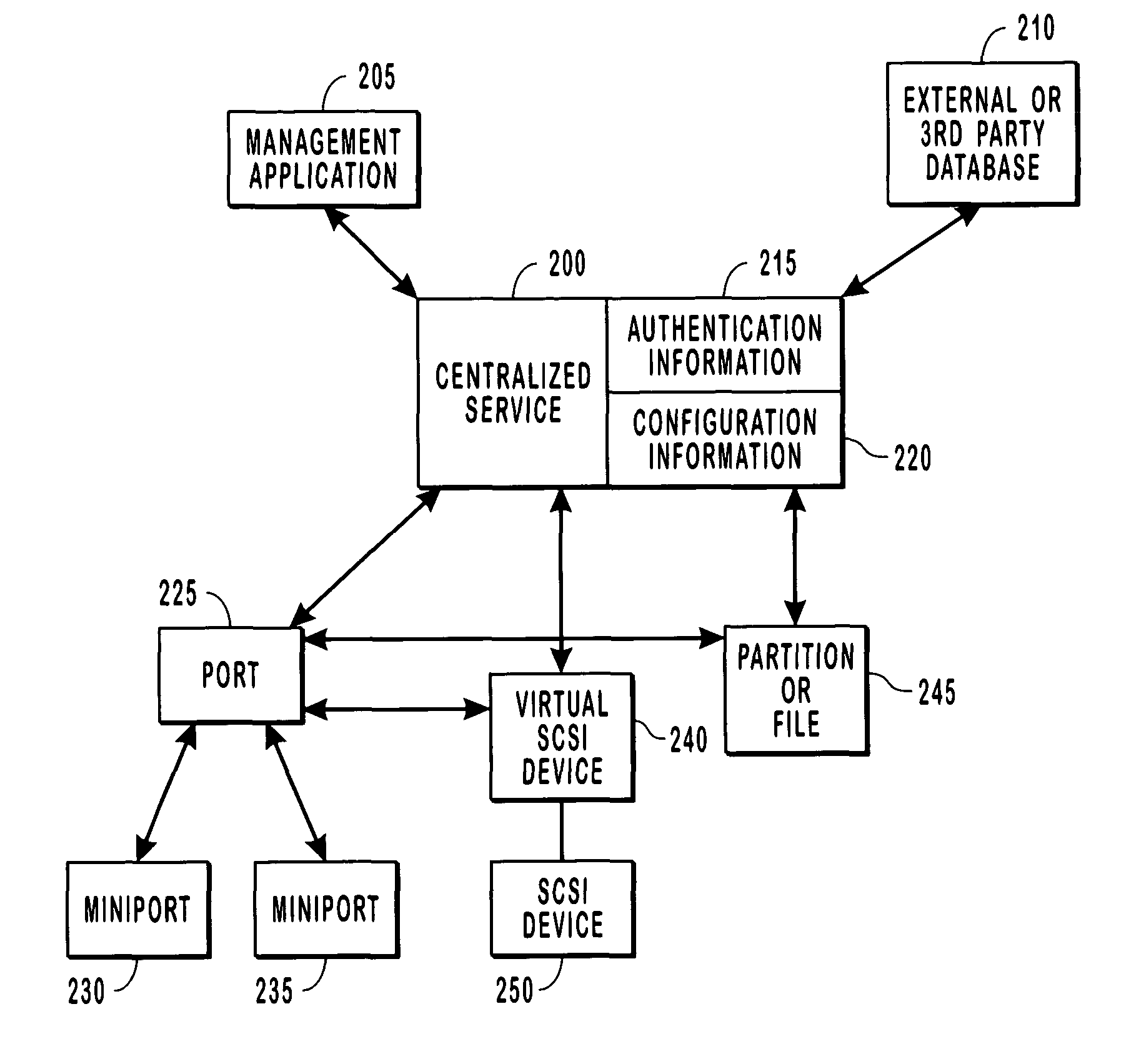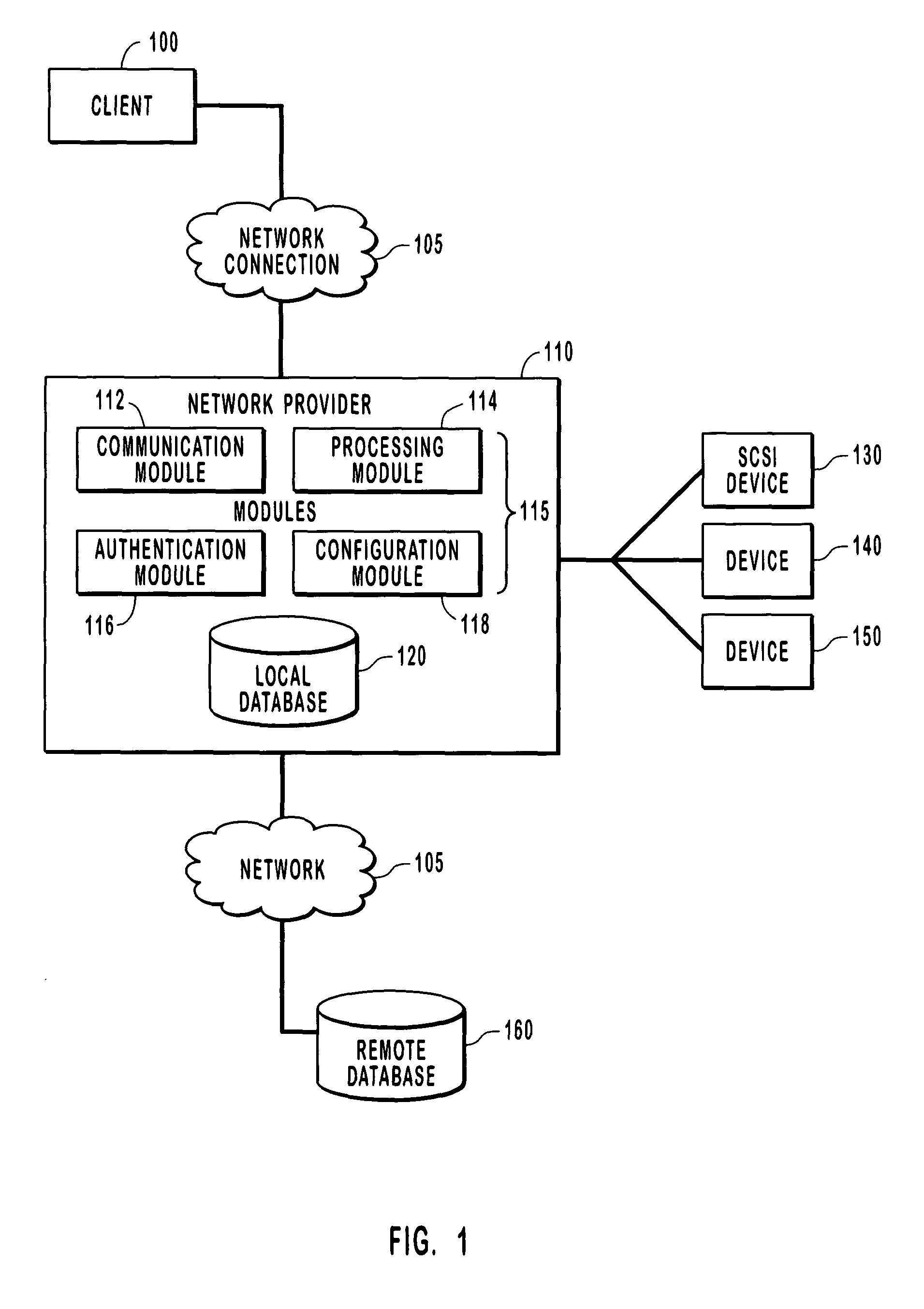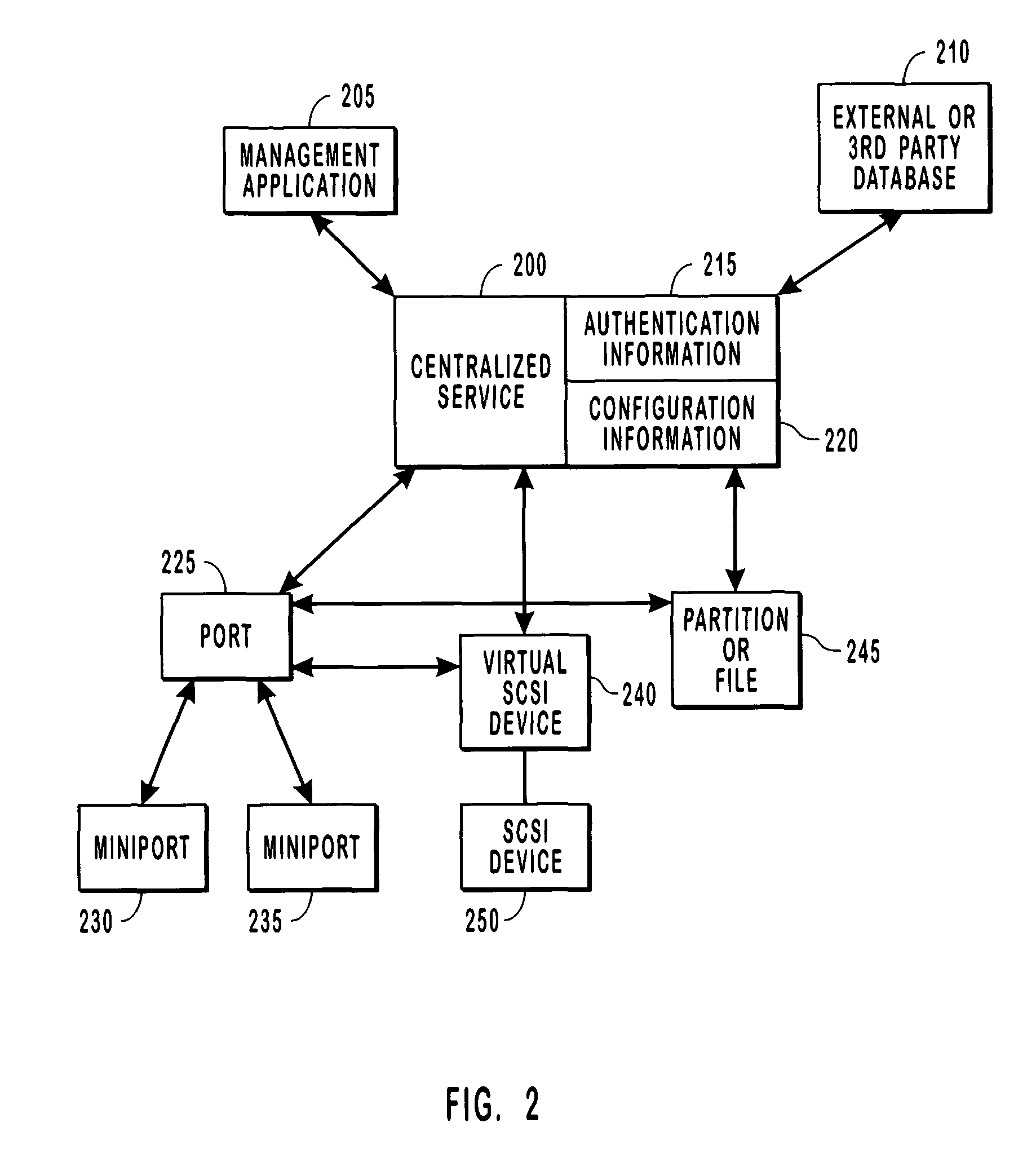Providing client access to devices over a network
a client and network technology, applied in the field of providing client access to devices over a network, can solve the problems of increasing the cost of multiple devices on the system, increasing the difficulty of users using externally connected devices, and increasing the difficulty of centralized services, so as to enhance the type of device access an administrator can achieve, and enhance the distinction of centralized services
- Summary
- Abstract
- Description
- Claims
- Application Information
AI Technical Summary
Benefits of technology
Problems solved by technology
Method used
Image
Examples
Embodiment Construction
[0024]The present invention extends to methods, systems, and computer program products for providing client access to devices over a network.
[0025]According to one aspect of the invention, a centralized service allocates one or more device identifiers into a target. The device identifiers can identify an actual device, or a file or partition on a device that represents a portion of the device. The centralized service then provides client access to the devices (e.g., partition, or file-based devices) by configuring client access to the target based on the client's identity or access permissions, and by providing access to the targets through specific ports at the network provider. Additional features and advantages of the invention will be set forth in the description which follows.
[0026]The embodiments of the present invention can comprise a special purpose or general-purpose computer including various computer hardware, as discussed in greater detail below. Embodiments within the s...
PUM
 Login to View More
Login to View More Abstract
Description
Claims
Application Information
 Login to View More
Login to View More - R&D
- Intellectual Property
- Life Sciences
- Materials
- Tech Scout
- Unparalleled Data Quality
- Higher Quality Content
- 60% Fewer Hallucinations
Browse by: Latest US Patents, China's latest patents, Technical Efficacy Thesaurus, Application Domain, Technology Topic, Popular Technical Reports.
© 2025 PatSnap. All rights reserved.Legal|Privacy policy|Modern Slavery Act Transparency Statement|Sitemap|About US| Contact US: help@patsnap.com



